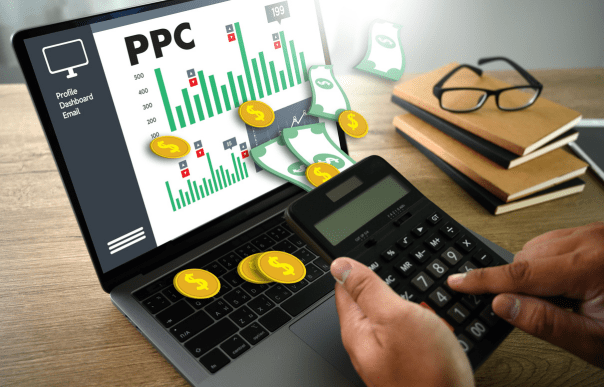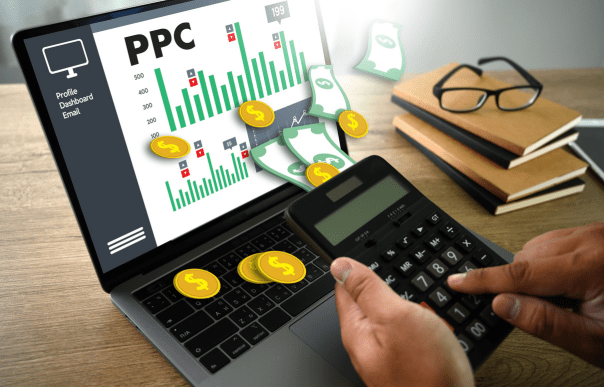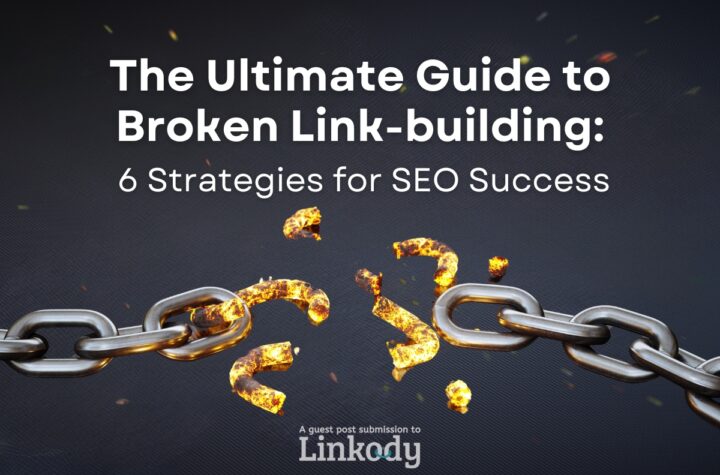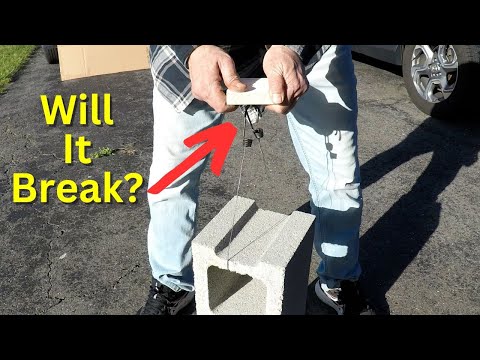

Search advertising is an umbrella term that encompasses a brand’s SEO and PPC strategy. Of course, one is more long-term than the other, and both can give good results if done correctly.
Through search advertising, brands manage to put their product forward as an efficient answer to the user’s query and get traffic to their websites. This traffic is, more often than not, better in terms of quality. But the issue with Pay-Per-Click (PPC) strategies is that sometimes marketers need to learn how to organize their marketing and bidding strategies and their marketing budget.
Which means they could potentially miss out on this:

(Source)
Without a solid PPC strategy in place, you could be losing conversion and creating PPC campaigns that could not help the rest of your marketing tactics any further. On the other hand, knowing how to create a successful PPC campaign with the right keywords and a landing page that could lead to more traffic could get you all the conversion you’ve been looking for.
But let’s see what the essential steps to a solid, successful PPC campaign are.
Knowing Your Goals Will Define Your Budget
Your PPC strategy could cover many marketing goals, so long as you do it correctly. Paid search could help you grow faster and more efficiently, bring about a lot more conversions, and, coupled with SEO and social media channels, could lead to an optimized landing page or even add a notch to your email list.
The first thing to know about your goals is that they should be SMART. As in:
- Specific
- Measurable
- Achievable
- Relevant
- Time-Bound

(Source)
Your PPC marketing strategy should work in tandem with your overall marketing strategy and aim to achieve individual components that will boost your performance down the line.
PPC strategies are part of a general online marketing strategy, along with content marketing, SEO, digital marketing, and others. And as with any component of online marketing, the first thing to do is to set the goals of your strategy and understand the digital marketing mistakes you need to avoid if you’d like to create a stronger brand without wasting your marketing budget. Once you decide on the goals you’d like to achieve for the time you’d like to operate under a specific PPC strategy, proceed with identifying your KPIs.
Your Key Performance Indicators (KPIs) are tangible performance metrics that will show whether or not your strategy is valid and successful. For example, if you aim to grow your email list through paid search, you should check two things:
- The qualified lead acquisition
- The conversion and lifetime value
After you study those results, combine them with the cost of your PPC campaign. That way, you’ll draw safe conclusions about the cost of your PPC marketing strategies and whether the bidding process was efficient or not.
As far as budgeting is concerned, you’ll need to understand the PPC bidding process and come up with a solid PPC bidding strategy first. So, ask yourself the following questions:
- How many keywords are you going to need? This will determine the number of terms you’ll need to bid on.
- Are those keywords relevant, appropriate, and timely? Your audience searches for answers to a problem. Ensure that the search terms you’re using answer their questions.
- When are you going to reach your expected ROI? Long-term goals need bigger budgets. That’s why most marketers work with SEO for those but use PPC for short-term purposes. It would be best if you created a PPC bidding strategy that won’t break the bank.
The answers to the questions above and your goal-setting are essential for the following steps.
Competitors and Keyword Strategy
Your competitors and their strategies will help you understand how your ideal user, or your buyer persona, will react when coming across your paid ads. One of the most common digital marketing mistakes is not giving your competitors the time of day and crafting a strategy that doesn’t stem from user behavior.
Use a competitor research tool to understand how users react to your competitors’ content. What is it that they do? How can you create better ad content that draws users in?
If your budget doesn’t allow for a tool yet, or you’d like a better image of how users react to your competitors’ PPC campaigns, you could also use Google. Like so:

Create ad campaigns as relevant and targeted as the one shown above with keywords that make sense to your niche and goals. Be as user-centric as possible; users utilize search engines to look for solutions.
You can be as broad or as specific as you’d like. A paid ad for a real estate agency could start from something as simple as “Homes in X area” as you can see below:

Also, look into the keywords your target audience uses for your content. That way, you’ll understand how and why organic searches lead to your website. If you still need clarification and want to avoid breaking the bank with more tools, you could open a dialogue with your users and ask them how they found your brand. Create a form or a survey and utilize those results to create content that will resonate with them.
Couple the above keyword research steps with some brainstorming, but remember the PPC keywords you’re already using. That way, you’ll create a strategy that will give you maximum results by boosting your Click-Through Rate (CTR) and reach.
PPC Strategy and Structure
What are the search terms you’ve identified in the keyword research phase? What actions would you like to take when it comes to those keywords? Why would you lead your user to said research and actions? The answer to those questions will help you understand the ad you’re meant to create.
After that, you’ll need to start defining your campaigns. Log on to the PPC tool of your preference and check out the ad groups. Creating a broad campaign and going for more specific subcategories in your campaigns will work to your benefit.
You need to be sure about your PPC budget when creating your ad campaign. Next, your keywords will determine the subcategories. For example, if you’ve got an eCommerce store and you’re selling clothes for winter sports, it would make sense to create different ad campaigns for headwear, jackets, gloves, and other accessories.
That way, users will land on a page that will tell them exactly what they need to know, leading your brand to very specific and targeted sales as a result.
Your Ad Copy
This is where things get a little more complex, as most businesses find it difficult to create compelling ad content that will benefit both their brand and the users.
More than most marketers fall into the same trap: They know what their business is about and don’t hesitate to create ad copies that talk about their brand in a business-centric and not a customer-centric way.
However, there’s an issue here. Marketers know their businesses, while customers don’t. So, the best thing to do when creating ad copy is to think like a customer. After all, an ad answers a user’s question, not a marketer’s or the brand’s. Here’s what I mean:

If I were to buy training shoes, I’d see the reason why I need to purchase the shoes from Nike in the first ad example. I need running shoes, and I need them at a lower price. And since this eCommerce business model allows for this type of copy, I’m all for purchasing online and getting free returns and fast delivery.
Of course, I’m pointing out the words above, as I would’ve personally gone for a “Nike Trainers Nexd-Day Delivery” type of query. And this ad shows me that Nike’s brand is here to utilize all types of questions I may have and give me an ideal answer.
Of course, this isn’t at all possible if they don’t use my desires – theoretical or not – to their advantage. But there is one disadvantage to this ad copy.
It isn’t memorable, and I wouldn’t have remembered the copy had I stumbled upon that in a hurry. However, here’s an example of copy I will remember:

I came across this ad looking for PPC examples. Now that is an ad that I will remember down the line. Its copy takes advantage of anything I would be looking for had I opted for a PPC tool. It’s well put together, I can see the value of a PPC campaign, and there’s a list of the things I need to know before getting started. What’s not to like?
If you’re new to PPC campaigns – especially PPC for social media – or if you want to generate leads through LinkedIn, this ad can help you understand what you need to succeed. As you can see, it brings users to the platform by being as simple as possible when it comes to solving a problem.
“Drive 3.5x More Conversions” is something a marketer would stop and stare at. Not to mention that it utilizes FOMO without using negative wording and opting for an actionable verb instead.
However, here’s where I need to point something out regarding your PPC strategy: You need to define your copy concerning the searches themselves.
You’ve created different subcategories for every type of search intent your users may or may not have. Use the keywords related to the subcategory and spread them across your ad copy evenly. You don’t need users to feel wary of seeing the same keyword all the time.
Make sure the headline of your copy has the target keyword you’re looking for. For example:

The target keyword is the brand’s name in that case. The user knows this ad will lead them to Moosend’s official website. There’s nothing more or less to it.
But what happens when your PPC tools show that your ad competes for the same keyword as a major company? Well, there are some tricks and tweaks for you.
Make sure to show your benefit right off the bat. Like so:

See how the first ad result is a website dedicated solely to Black Friday offers? Now, see that the copy is “Ads and Deals”? This is all a user wants from a Black Friday ad; to know where to find the best online deals available.
Your Landing Page
If you’re sure you’ve created a PPC campaign that you love, let’s move to the next step, aka your landing page. Let me preface that by saying that your landing page should feel natural, like the logical representation of your brand. Here’s why:

(Source)
We’re talking about a significant bounce rate here. Of course, there are other components besides copy. Usually, the page’s loading time is the most crucial element to that bounce rate. Still, creating copy that will lead organically to your standalone page that is solely designed to convert is always a good idea.
So, your PPC ads should lead users to a landing page that fits a specific purpose. After all, knowing how to create a landing page entails knowing how to create compelling, short-form copy that matches the ad that leads to the said landing page. Let me show you why:

(Source)
The better and more natural the fit, the higher the conversion through that PPC ad. And the more targeted the content, the higher the conversion. After all, users won’t search for “coffee shops”, but they will search for “best cappuccino in town”. If you’re a coffee retailer, your landing page should be all about cappuccino. Refrain from redirecting them to larger pages, like your website or your online store, where they can buy coffee.
Consistency is vital in this case. So, take advantage of your keywords and be semantically appropriate with expert branding to keep users on your page.
Super Pro Tip: Make sure to utilize long-tail and local keywords. If I’m searching for the cheapest rentals in Phuket, I’ll appreciate seeing a landing page that says just that from a travel agency that is popular enough to convince me it’s not a scam.
Test Your Ads
As I always like to mention, creating something will get you nowhere without testing it first. Create copy that is straight and to the point, a little cryptic but not too much, and leads the users straight to their desired product or action.
Make use of all the space you’re given – if your ad should contain 30 characters, don’t use 25. Take advantage of all the space your PPC ad copy can occupy, and don’t waste your audience’s attention with useless words that have nothing to do with their intent.
After that, rewrite a passage by changing one key component. It can be one word, a headline, an exclamation point, or a comma. Create your two versions and see what your data tells you about the user’s behavior and the ad’s performance.
If your PPC tool allows you to use dynamic content, like Facebook’s Dynamic Creative Ads, feel free to take full advantage of it. You’ll create the best ad version based on one key component and sell to your audience naturally and easily.
Generally speaking, A/B testing can give you valuable data regarding all your marketing strategies, PPC campaigns included. So, never skip that step.
Time to Optimize
Now, it’s time for your PPC campaign to enter the optimization phase. Your campaign might be perfect, but it will only do something for your conversion if optimized.
Discover the ineffective keywords and use your PPC tool to “blacklist” those keywords. The “ineffective” keywords are those that have a high impression but a low click-through rate. That way, you’ll make the most of your paid advertisement budget and spend your PPC bidding budget on keywords that make sense.
The second step here is to improve your ROI as a whole. Your objectives will determine whether your ROI is the intended one or whether you need to redefine your goals. Remove keywords that won’t perform as well as you intended them to, and invest in better-performing keywords that fulfill your customer engagement benchmarks.
Of course, those benchmarks should be measured and accounted for in your marketing reports. Track how effective your PPC marketing strategy is by comparing your performance to your competitors, the performance of your campaign as a whole, and your customers’ engagement with your products.
Also, take note of the following:
- Your auction insights, where you’ll see how you perform against your competitors
- Your search terms, where you’ll understand the keywords that get more or less clicks and which ones you need to remove from your copy
- Your campaign performance, where you’ll see data from your campaigns as a whole
- Your ad performance, where you’ll see performance data from individual ads
Taking advantage of the data above will help you optimize your PPC campaigns.
The Takeaway
A PPC campaign is a marketing staple – and a favorite, so long as you use it wisely. It will drive results quite quickly, hence why you need it to increase your traffic through main keywords that are not in for the long game.
PPC ads are measurable through your KPIs, and budget-friendly, provided you don’t exhaust your marketing budget on PPC bidding strategies that make no sense and keywords with low performance.
Lastly, your PPC strategy is – or it should be – compatible with your SEO strategy. Combining the two can give excellent results and boost your online marketing performance as a whole while producing organic and paid traffic that can increase a brand’s conversion.

Author:
Téa Liarokapi is a Senior Content Writer for Moosend, an email marketing and marketing automation platform, and an obsessive writer in general. In her free time, she tries to find new ways to stuff more books in her bookcase and content ideas – and cats – to play with.
The post How to Build, Execute, and Optimize a PPC Strategy in 7 Steps appeared first on Linkody's Blog.





More Stories
The Ultimate Guide to Broken Link Building: 6 Strategies for SEO Success
SEO Game Changer: How Topic Clusters and Pillar Pages Can Skyrocket Your Rankings?
Every AI SEO Tool Mentioned At Pubcon Vegas